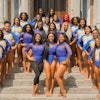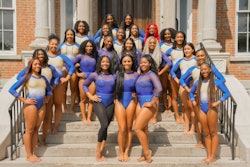Successful Examples of Student Athletes at Alcorn State
Dear Editor:
I read with great interest the edition with the story about James Brooks (see Black Issues, Jan. 6). At Alcorn State University, we have instituted an effective program called Athletes as Scholars to prevent this sort of tragedy.
Further, the most recent (1999) NCAA Division I Graduation Rates Report shows Alcorn State with a 55-percent rate for its athletes. This is one of the highest among all universities for Black athletes.
We are proud of Alcorn State’s professional football players with degrees: 1994 Chicago Bears first-round draft pick John Thierry (B.S., pre-med), 1995 Tennessee Titans first-round draft pick Steve McNair (B.A.) and 1999 Green Bay Packers seventh-round draft pick Donald Driver (B.S.).
Also, for two consecutive years, Alcorn State has received the $10,000 Burger King athletic scholarship — in 1998 for senior quarterback Marcus Taylor (3.0 GPA in computer science) and in 1999 for senior running back Rodney Thomas (3.5 GPA in pre-med).
Dr. Clinton Bristow Jr.
President, Alcorn State University
Lorman, Miss.
Night and Day, HBCUs Are the One
Dear Editor:
Thank you for the “As Different as Day and Night” article about Missouri’s Lincoln University (Jan. 6, 2000). As a Fisk Alumni, a former employee of St. Louis’ Harris-Stowe State College and a native of Dayton, Ohio, I have been exposed to many facets of the “HBCU experience.” I have witnessed the struggles of Tennessee State University, Central State University and Lincoln University. This story brings to the forefront the current public HBCU dilemma.
As the article points out, the integration of administrations, faculties and student bodies is not unique to Lincoln but rather, a commonplace phenomenon. Increasingly, HBCU supporters find themselves in the difficult position of trying to preserve HBCUs’ cultural heritage and identity while simultaneously embracing diversity. Finding that balance is frustrating, to say the least.
Yet, in the midst of all of the chaos, we must remember that HBCUs have always welcomed others through their doors. Look no further than their founders, administrations and faculties. Perhaps even more important are the legacies of HBCU alumni like W.E.B. DuBois, Thurgood Marshall, Dr. John Hope Franklin and Marian Wright Edelman, among others. Many African American students have walked in their footsteps on HBCU campuses, contributing to the rise and continued growth of the Black middle class.
Should future generations of African American students be denied the same opportunity? The reality is that massive integration efforts may diminish the Black presence and involvement on Black college campuses. In an increasing number of states, HBCUs are fighting one of their toughest battles ever.
Kyra M. Grimes-Robinson, author of
No Ways Tired: The Public Historically Black College Dilemma
Dayton, Ohio
© Copyright 2005 by DiverseEducation.com



















